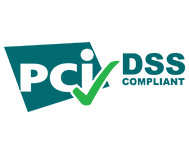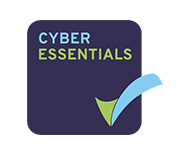SME Survival Kit
SME Survival Kit

Keeping Everyone 'Productive'
In the current challenging economic climate where many businesses are being forced into remote working from home for the first time there is very little guidance for SMEs who need to mobilise quickly to maintain their operations and keep employees engaged.
As SME’s we are entering an unprecedented period where remote working is a ‘must’ to keep customers happy. This document sets out an SME survival toolkit for remote working and further useful hints and tips. It also helps to set out how we can deal with the challenges and opportunities that this enforced period of remote working could bring to SMEs that aren’t traditionally set up for this way of functioning.
It is therefore, critical to assess how a period of ‘forced’ home working can be made easier through the use of simple and affordable technology, which will be vital in providing your employees with the right tools to carry on and continue adding value to your business and its customers.
Work-from-home policies have existed since long before the Coronavirus outbreak. But this is the first time many SME businesses are planning for a remote workforce. It is important to have simple strategies to keep your business productive, safe and your people engaged to remain productive no matter what their role in the business. Many businesses are scratching their heads with what to do with productive people and people who are not used to working from home.
This can be a tricky period to navigate for SMEs as they do not have the same infrastructure and resources of larger corporates, therefore the following tips to home working for leaders should provide a useful checklist:
Develop an online learning focus – Don’t underestimate its power!
In light of the coronavirus, having a simple online learning platform that all employees can access ensures time can be taken to update and complete vital compliance and policy training for all staff. If you have not considered online learning previously, don’t underestimate its effectiveness in getting people trained effectively and using the technology to keep your people engaged and motivated towards your business. Leading SME businesses are seeing the introduction of this type of technology as a vital part of their home working planning.
It is also a great opportunity to create your own training resources around best practice for your business and push these to people to learn via a learning platform. This could be in the form of documents, videos (self-made, or found on the internet), testing of knowledge. Some businesses are looking to ensure their staff review important businesses processes to ensure clarity, standard operating procedures, product knowledge, service standards, technical capability, systems training etc. By focussing on training and learning this is a great time to point everyone to improving themselves and to further build consistency in approach towards achieving future goals and objectives once things return to normality.
Embracing learning technology to develop your managers is a great way to cost effectively enhance the skills of these key people and keep them engaged. Your managers are going to need support as they potentially manage people remotely for the first time. It is vitally important to retain your most talented people, therefore ensuring they have some form of online learning plan to develop their skills is important, as you don’t want them using downtime to reflect on their own personal position, which so many people typically do over a festive period of downtime. Research has shown that coming into 2020 that 1 in 2 managers are looking to move businesses, which would be anything from 30-200% of their salary cost to attract, recruit and train someone of the same capability.
Using this time wisely, people can be incredibly productive through learning and training to ensure you come out the other side stronger and able to achieve your long term objectives.
Coaching and Connectivity:
What a great opportunity to embrace technology and use the extra time created by working remotely to enhance your connectivity with your people. Using online tools like Zoom is a great way to stay connected and ensure people feel engaged with the business and less isolated. These tools are relatively inexpensive and can be used via any device, therefore most people typically have a SMART phone nowadays, so can have video calling and easily access training via this device through a learning platform. On-going faceless phone calls and a mass of emails have potential for your people to feel disengaged with colleagues and the business, in particular if this is the first time they have worked from home.
Using technology is also a great way to provide continued feedback, one to one reviews and coaching on performance. Carrying out regular live one to one video call reviews and providing ongoing coaching could present a new way to communicate. Platforms like Zoom will enable you to record these sessions and upload them to your learning platform as a resource for your people to return to so they can reflect further and learn.
Time saved for directors and managers when they would usually be travelling can be used to allocate more dedicated time to their people through home working, so discussions and focus can be around areas the individual may need to improve on and provides a great ongoing opportunity for regular feedback and direct coaching. Taking this approach and using time wisely will ensure your managers are stronger and more equipped to cope with fast paced change and be far stronger as we come out the other side of the current climate.
We know from research and experience that the middle manager tier in many SMEs is seriously under developed in problem solving, decision making and thinking commercially, therefore senior management in the main result in working at this level, which is what you are paying them to do! The long term impact of this is its limiting factors around growth of the business, if time is not taken to develop these important people.
A quick guide for People Managers in SMEs: ‘Managing people remotely’
It is highly likely managers are managing remote people for the first time, so here’s a simple checklist of things they should consider:
- Ask each team member to describe the conditions under which they would perform best when working from home?
- Set expectations with every employee and clearly; An employee working from home with little guidance will not be productive and potentially see a floor in your management style, which could be disengaging.
- The work you need to do is…
- The quality expected is…
- This deadline is…
- This is how you/we will keep each other updated on progress…
- Ensure people have the right equipment to be successful and use technology to stay connected and collaborate with each other in your team. It is important to ensure everyone understands how to use the technology properly!
- Include a time for socialising online with colleagues to retain team moral, which could be gaming, competitions or just a general ‘chin wag’!
- There will be no chance for bumping into people in the corridor or on the factory floor, therefore managers will need to ensure that continuous communication with their people is at the forefront of their minds to keep people motivated and working towards a common purpose.
- Whether managers like it or not they will have to ‘trust’ their people working remotely and learn how to manage workers remotely and learn fast!
It is incredibly important for business owners and senior management to support their less experienced managers, as this could be a tough transition. Investment in management training and providing coaching via video links and a learning management system could be a great ‘cost effective’ way to practically support this change quickly.
Regular Updates – ‘Anxiety moves faster than a virus’
Experts have recently shared that “anxiety moves faster than a virus.” So, it’s important to remember that businesses have a huge role to play in keeping their workforces positive and informed.
Through the use of technology this is an important time to review how you communicate. Business owners and senior management can make sure they strike an important tone of support and opportunity. This is a chance for businesses to demonstrate how to be nimble, value what is important, and keep moving forwards. Some businesses are going out of their way to focus on their employees’ wellbeing by providing online training and resources to show care and support.
Using technology like a learning platform we are starting to see SMEs use this as a great way to communicate with their people in a consistent way and to provide a consistent message. Senior people are recording themselves via mobile phone and providing updates across a variety of topics to them push out through the learning management system to the whole business, or selected groups. Businesses who have an intranet do not typically have an understanding of who is reviewing information, when and have they understood it, whereas pushing updates and vital communication via a learning management system combats all of these issues for you. It is simple too and you can even add some knowledge check questions to ensure your people have understood the key messages. This is a great way to stay connected with a remote team, you can also make this fun and engaging.
Extend perks to the home
Make the transition from in-office to home as seamless as possible by extending the same in-office benefits for newly remote employees. A simple non expensive perk could be to allow all people at least 30/60 minutes per day for training, updating their knowledge around their core job role. Once remote workers return to work you could ask them to discuss with their line manager how they have improved themselves during this period, how that will impact on their performance and overall how will it impact on improving the business, as kind of a mini project. Other businesses are looking to go that next stage further by expensing one meal a day and providing vital equipment for their remote workspace.
Simple strategies like this enable businesses to still embrace company values and help employees remain connected to the company, while minimising disruptions during times of quick change. This also shows that remote work is not a downgrade from being in-office, but another version of what work could look like in the future as we all move to a more flexible working model in the coming years. Use this time as a dry run, you never know you might find this works better for the business and creates more engaged people! It’s easy to play these off as ‘extra perks’, however it’s really about setting up employees for success, no matter where they work, or what role they play.
An opportunity to think differently!
Many businesses are embracing this period of uncertainty and ‘forced’ remote working as an opportunity to stress test their businesses and challenge the current way they work and manage their people. Times are changing, the millennial workforce entering SME businesses in large volumes want flexibility in working hours and ‘on-demand’ learning and training at their fingertips, so never before is this a great time to assess how you will work in the future. With a bit of luck this could change the way you think and work forever!
The SME Tech Survival Kit
There are a variety of technology solutions, however certain digital tools should be on every SMEs shopping list (if not already using them in some form). These tools are typically inexpensive and are simple to implement and quick to get up and running with your remote working team(s):
- Communication tools such as Slack, Google Hangouts, Microsoft Teams, WhatsApp Groups. These will help in keeping informal communication going outside of the formal constraints of emails. Replacing the water cooler element of office work will be vital in battling isolation.
- Video communication tools such as GoToMeeting, Skype, Zoom will allow face to face communication, coaching and collaboration.
- Security will be key to home working with a rise in phishing and cyber attacks already seen globally with people trying to exploit technology and anxiety weaknesses. Tools such as Sophos and a password keeper can help keep us all safe.
- Collaboration tools will help keep people productive and share work online. Tools such as Asana, Monday or Trello can help in keeping projects on track and visible in the business.
- Training will help provide employees with new skills to cope in this new working environment as well as maintain the emotional bond with the business. They may find time to access training content which they didn’t have previously, so it allows them to be productive in these dips (famously Shakespeare wrote plays while the Globe Theatre was closed, Isaac Newton came up with the theory of gravity, motion and devised calculus while his Cambridge College was closed due to the plague!). Learn something new or try being creative on improving the role/business with new skills. Tools such as LinkedIn Learning or the SME focussed IMPROVE learning platform can help with this, as a simple way to deliver training.
- HR Tools. If you are still working from spreadsheets and email requests for holidays, expenses and sickness reporting now is the perfect time to bring this online with SME focussed tools such as BreatheHR, as an example.
This document has been written by Steve Walker who is a leading expert in the development of disruptor-based learning platform technology for SMEs.

'The' Online Learning Portal for SMEs
Read On
What are the benefits for SMEs in developing their people?
The Benefits for SMEs in Developing your people Investing in people is always a challenge...How in an ever-changing world SME Companies can Succeed through outsourcing
The birth of Mobile Phone Learning for SMEs
The Birth of Mobile Phone Learning for SMEs? It is rare nowadays to not have a SMART phone,...Accreditations



